Layers of Earth, Composition & Earthquakes
by Devender
0 1972
Basically, it is believed that Earth has 4 different layers which are:
- The outer crust
- The plastic-like mantle
- The liquid outer core
- The solid inner core
- Crust:
- The earth's crust is broken into many pieces known as plates
- These plates float on the plastic mantle that exists below the crust
- These plates move along swiftly but sometimes they and build pressure
- When this pressure builds, the rock bends until they snap which results in earthquakes
- The crust is made up of two basic type rocks that are granite and basalt
- Mantle:
- Asthenosphere
- Lower layer
- Core:
- The outer layer is from 2900 to 5100 km and in the form of liquid as the temperatures there are adequate to melt the iron-nickel alloy
- The inner core is from 5100 to 6378 km and is in the form of a solid even though its temperature is higher than the outer core
- Lithosphere:
- The upper part consists mainly of Granite rocks & forms the continents
- It is approx. 100 km and with an average density of 2.7
- Silica & Alumina together known as SiAl are its main constituents
- The lower part is the continuous zone of denser basaltic rocks which forms the ocean floors
- It is from 100 to 400 km with an average density of 3
- Silica, Iron & Magnesium together known as SIMa are their main constituents
- Earthquakes:
- The place of the origin is known as Focus/Hypocenter
- Epicenter is the point vertically above the focus on the earth surface
- The intensity/Severity of earthquake is measured by MMS (Modified Mercalli Scale)
- The magnitude of the earthquake is measured by the Richter scale
- The variation in direction of waves is measured by Seismograph
- P-waves also known as longitudinal or primary waves, travel in all mediums with a speed of approx. 8 Km/s
- S-waves also known as transverse or secondary waves, travel in solid and gas mediums but not in liquid medium with a speed of approx. 4 Km/s
- L-waves can only travel in a solid medium at the surface of the earth with a speed of approx. 3 Km/s
- Types of Earthquakes:
- Shallow focus earthquake with Depth from 0 to 60 Km
- Medium focus earthquake with Depth from 70 to 300 km
- Deep Focus earthquake with Depth from 300 to 700 Km
- Below 700 km – Not very dangerous
Layers of Earth, Composition & Earthquakes
Many geologists believe that when the earth cooled down, the heavier and denser materials sank to the center while the lighter materials rose up to the surface and that is why the crust is made up of the lightest material while the core has heavy metals like nickel and iron.
It is the outermost layer of the earth's surface and is solid & brittle in nature. The crust is only 8 kilometers thick under the oceans (Oceanic crust) whereas it is around 32 KM thick under the continents (continental crust).
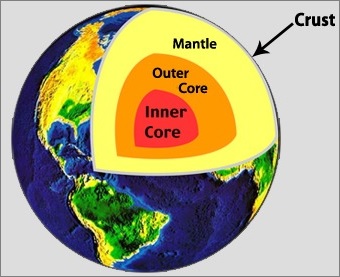
The continental crust is mainly made up of granite while the oceanic crust consists of a volcanic lava rock called basalt.
It lies below crust till 2900 KM and is mainly composed of denser rocks that are rich in Olivine. It consists of two layers:
The Asthenosphere is the upper portion of the mantle till 400 km and it is weak. It is the source of Magma.
The Lower layer is from 400 to 2900 km and is solid in appearance.
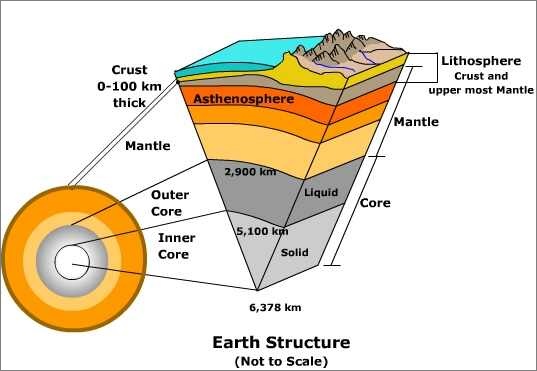
It is thought to be made up of an iron and nickel alloy mainly. It is divided into two different zones.
The weight of the overlying rocks is strong enough to crowd the atoms tightly together and prevents the liquid state by putting a lot of pressure.
The Crust and Asthenosphere are made up of SiAl + SIMa and consist of two different parts.
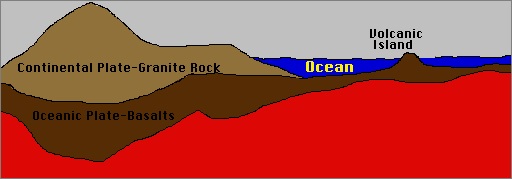
SiAl is lighter than SIMa, so it can be said that continents are floating on a sea of denser SIMa. Height is inversely proportional to Pressure, Temperature & Density.
Earthquakes are tremors that are produced by vibratory waves through rocks of the earth mainly along a fault.
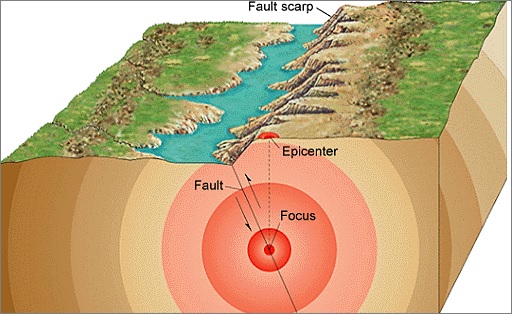
The shockwaves travel in all directions from the focus but the shaking is maximum at the epicenter. The earthquakes are measured on the following scales:
The earthquake waves are considered to be the most important source of the earth’s interior. The P & S waves are known as Body waves whereas the L waves are known as surface waves.
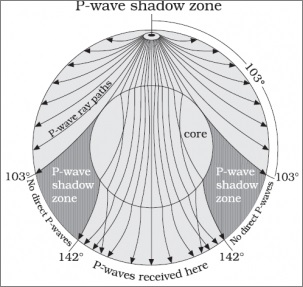
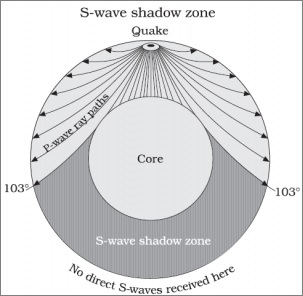
Earthquakes usually happen when underground rocks break along a fault which causes a sudden release of energy called seismic waves, which mainly occur in the Lithosphere.
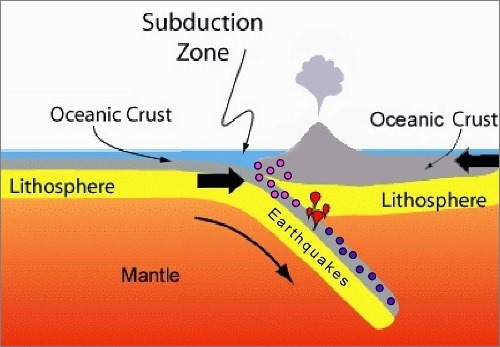
The distribution of the earthquakes coincides very closely with that of volcanoes with almost 70% of the earthquakes occurring in circum Pacific belt while the other 20% happens in the Mediterranean-Himalaya region.
The earthquakes can be categorized into 4 groups which are:
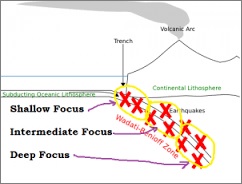

Share:

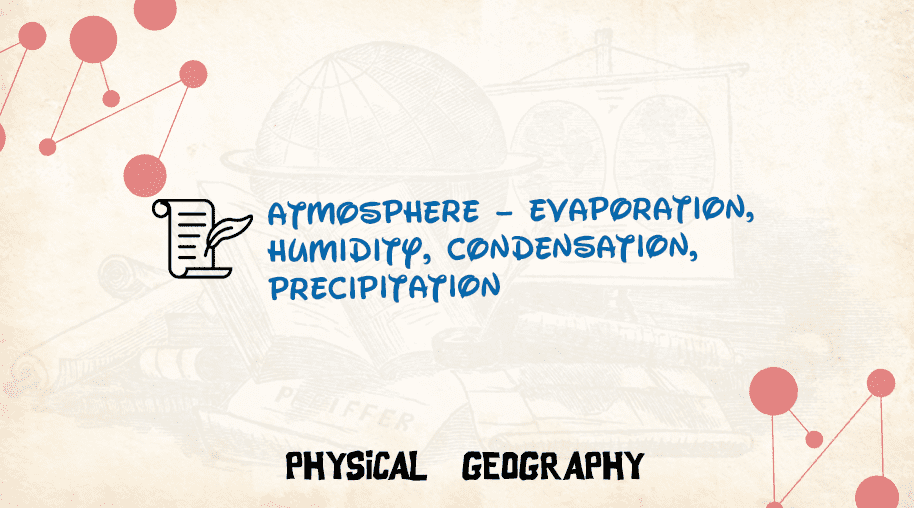

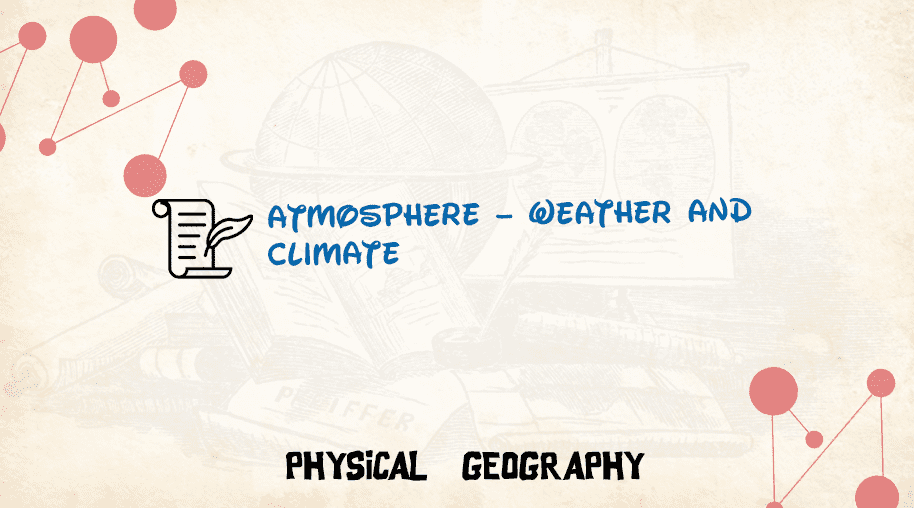



Comments
Waiting for your comments